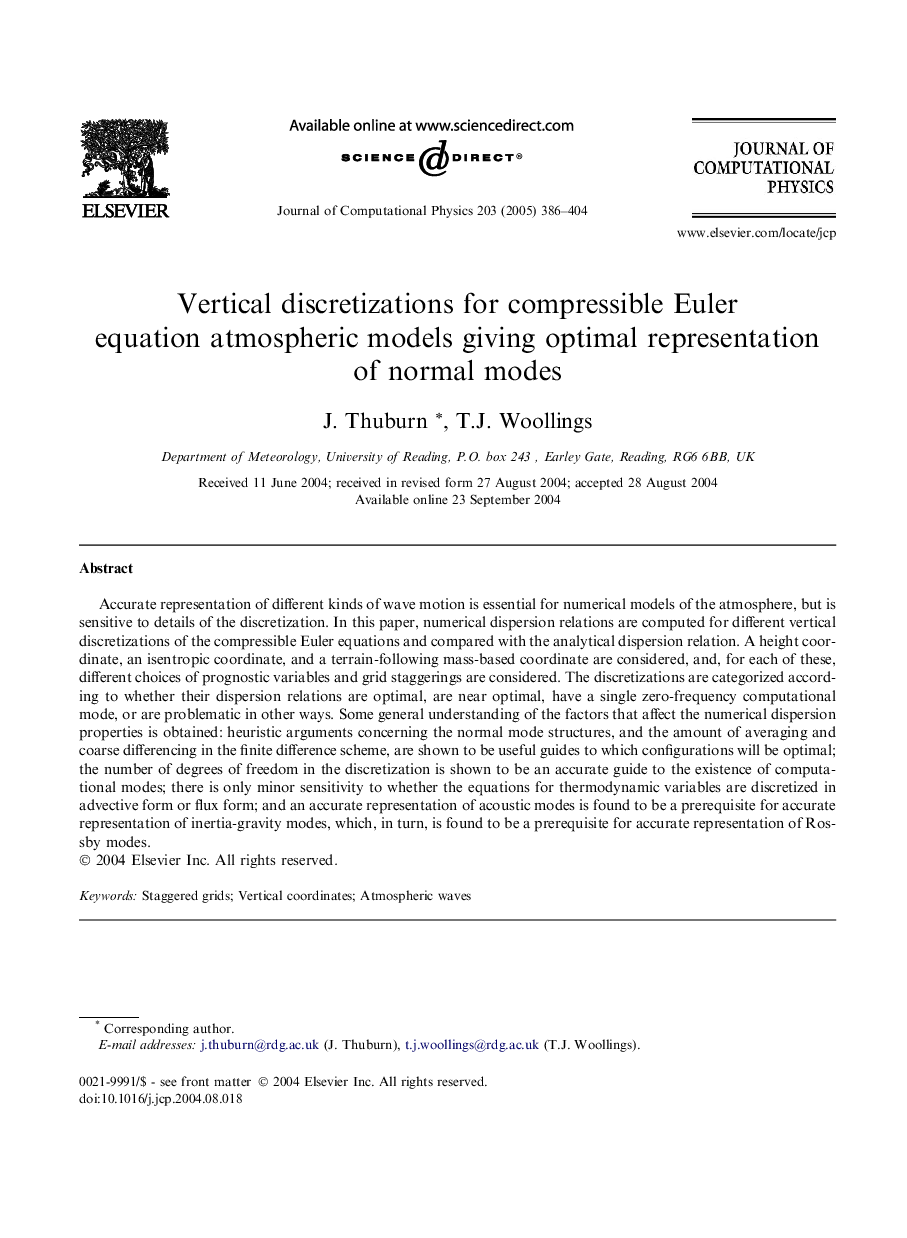| Article ID | Journal | Published Year | Pages | File Type |
|---|---|---|---|---|
| 10357387 | Journal of Computational Physics | 2005 | 19 Pages |
Abstract
Accurate representation of different kinds of wave motion is essential for numerical models of the atmosphere, but is sensitive to details of the discretization. In this paper, numerical dispersion relations are computed for different vertical discretizations of the compressible Euler equations and compared with the analytical dispersion relation. A height coordinate, an isentropic coordinate, and a terrain-following mass-based coordinate are considered, and, for each of these, different choices of prognostic variables and grid staggerings are considered. The discretizations are categorized according to whether their dispersion relations are optimal, are near optimal, have a single zero-frequency computational mode, or are problematic in other ways. Some general understanding of the factors that affect the numerical dispersion properties is obtained: heuristic arguments concerning the normal mode structures, and the amount of averaging and coarse differencing in the finite difference scheme, are shown to be useful guides to which configurations will be optimal; the number of degrees of freedom in the discretization is shown to be an accurate guide to the existence of computational modes; there is only minor sensitivity to whether the equations for thermodynamic variables are discretized in advective form or flux form; and an accurate representation of acoustic modes is found to be a prerequisite for accurate representation of inertia-gravity modes, which, in turn, is found to be a prerequisite for accurate representation of Rossby modes.
Keywords
Related Topics
Physical Sciences and Engineering
Computer Science
Computer Science Applications
Authors
J. Thuburn, T.J. Woollings,
